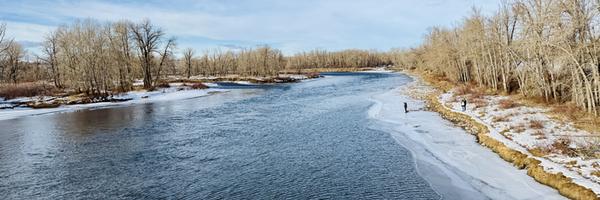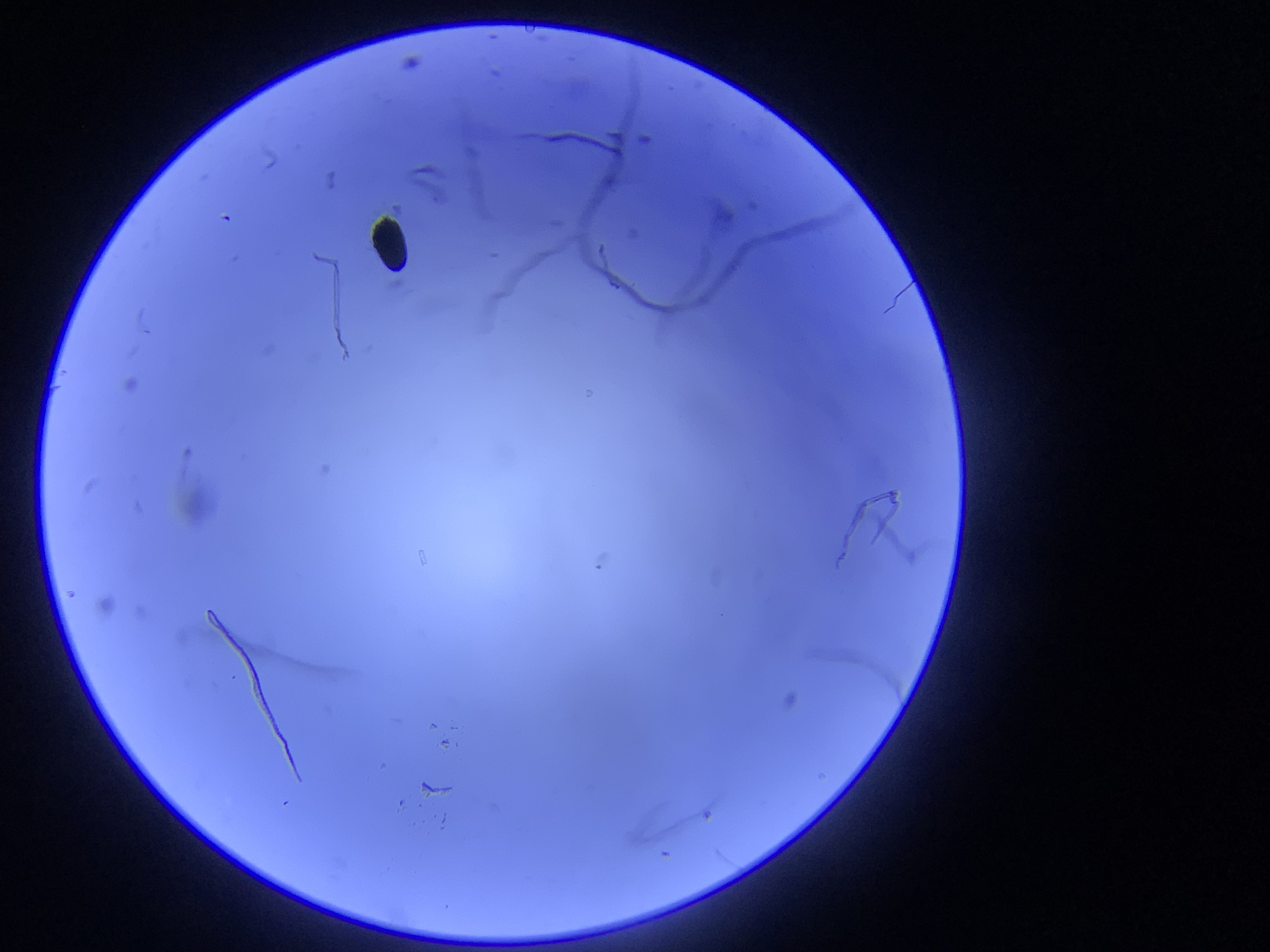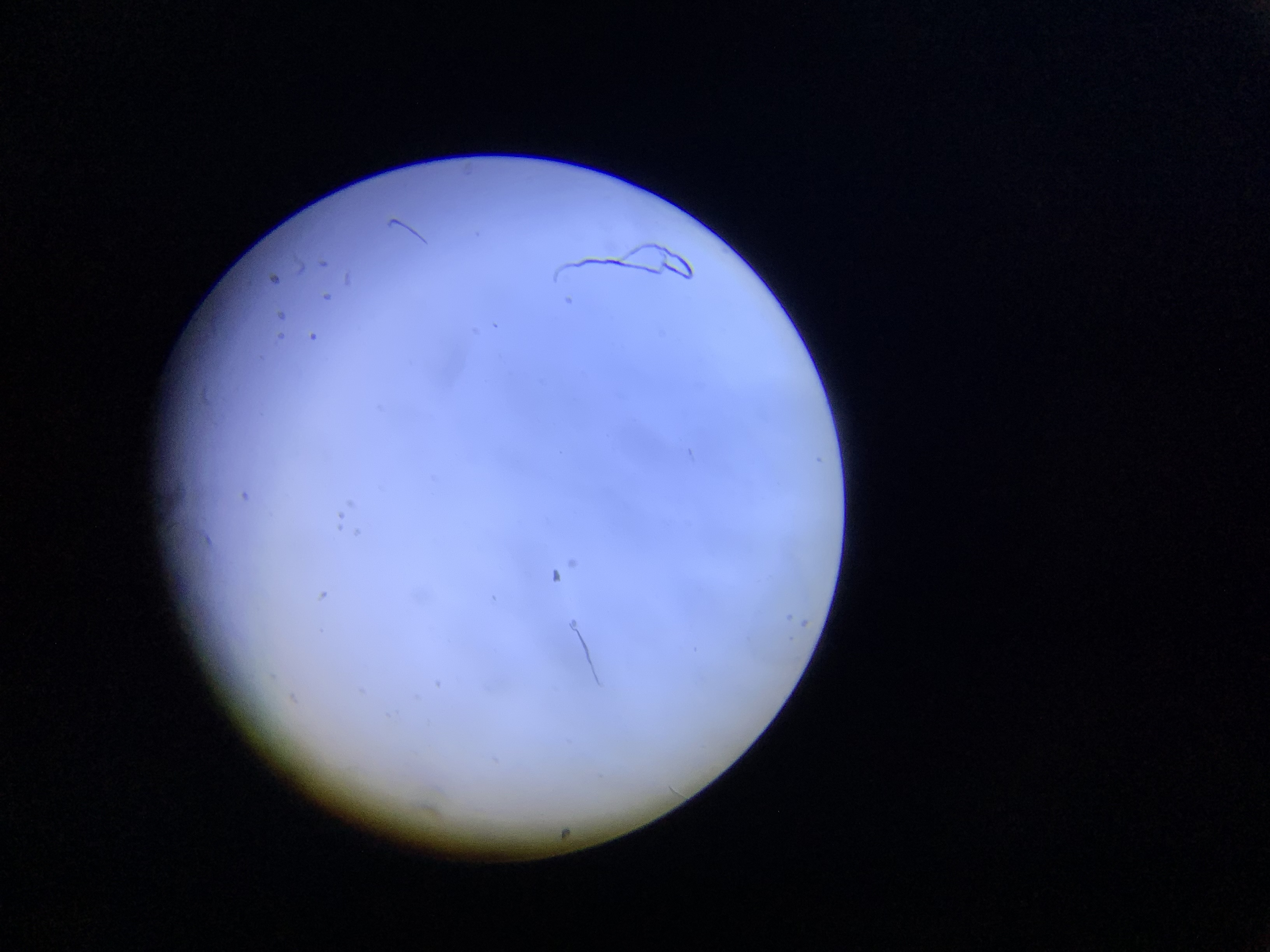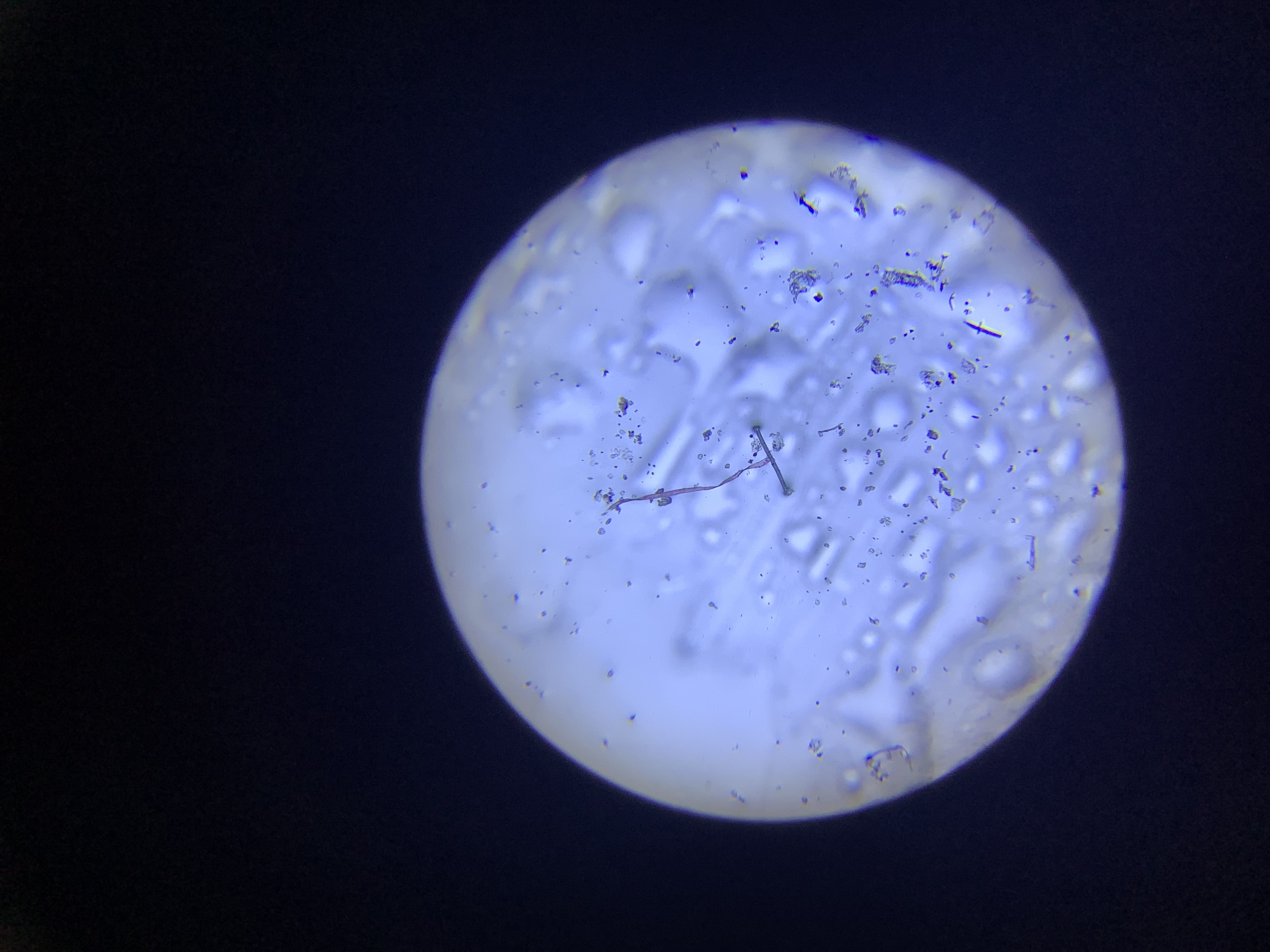Marauders of the Water: Detecting Microplastics
Grade 6
Presentation
Hypothesis
When the different water bodies of Calgary are tested for microplastics, all water bodies will have microplastics in them and the size of the microplastics will be comparable to two microns.
Research
- Microplastics are any from of plastic that are less than 5mm.
- They are categorized into 2 parts: Primary and Secondary Microplastics
- Primary: Made specifically to be miniature; example - for cosmetics
- Secondary: Larger items decompose to microplastics ex. Water bottle
- Microplastics - Also found in antarctic ice
- Some say microplastics have no effect on body
- Others say it can cause oxidative damage, DNA damage and cancer development
- Microplastic enter water bodies - rain pushing road and tire pieces
- Cont. Littering, COVID-19 Masks, have plastic fibres
- Real Life Applications - City of Calgary, Wildlife Conservation Groups - take action to clean water bodies of Calgary
- Paige Jackson made an experiment showcasing that:
- Calgary’s sewage can’t filter microplastics
- Causing the Bow River to be contaminated
- Natalie Tufenkji (McGIll University) - trying to remove microplastics from water bodies
- Tufenkji is also researching the effect of microplastics on human body
- Humpback whales - eat 200,000 pieces of microplastics
- When animals reproduce, babies have chance to have microplastic
- Vulnerability to illness
Variables
Manipulated Variable: The locations the water is being collected from (ex. Bow River, Elbow River, etc.).
Dependent Variable: The presence and approximate size of the microplastics
Controlled Variable: The quantity of water from each water body that is being tested.
Procedure
Before Filtration Procedure:
-
Collect water samples from the water bodies
-
Set-up the microscope
-
Using the dropper, put 2 drops of water on a slider
-
Put the second slider on top of the water and place the slide on the mechanical stage and fasten with the stage clips
-
Change the magnification to have a x40 magnification (with eyepiece magnify)
-
Move the slide around the center to get the desired image in view
-
Wipe both sliders being used for the sample you are testing before the next one
-
Repeat from step three for each sample
-
Gather data
-
Organize the data in a chart
Filtration Procedure:
1.Take the sample in the beaker
2.Place the funnel on the plastic bottle
3.Fold the filter paper into quarters and open slight to make it a cone
4. Place the cone inside the funnel
5.Slowly pour the samples onto the filter paper and make sure not to overflow the water
6.Collect the filtered sample
7.Follow the same steps from the previous procedure to check the water
8. Repeat steps one to eight for each sample
Observations
Under Microscope:
Carburn Park: -Microbeads -Thin Fibres -Red String -Thick Short Pieces of Plastic Inglewood Bird Sanctuary: -Very Thin Red Piece -Thick Rubber Band-Like Plastic -Small Fibres Confluence Park: -Long, Red Tangled String -Many Small Fibres -Microbead Distilled Water - Control: -ClearOn Filter paper:
Carburn Park: -Red long Fibre -Long Blue Fibre Inglewood Bird Sanctuary: -Black Fibres -Small black Fibres Confluence Park: -Red, Snake shaped Fibre -Black Curly FibreFiltered Water:
Carburn Park: -Black Fibres, Tangled Inglewood Bird Sanctuary: -Small Red Fibre -Black Fibre Confluence Park: -Small Black FibresCarburn Park - Before Filtration;
Inglewood Bird Sanctuary - Before Filtration:
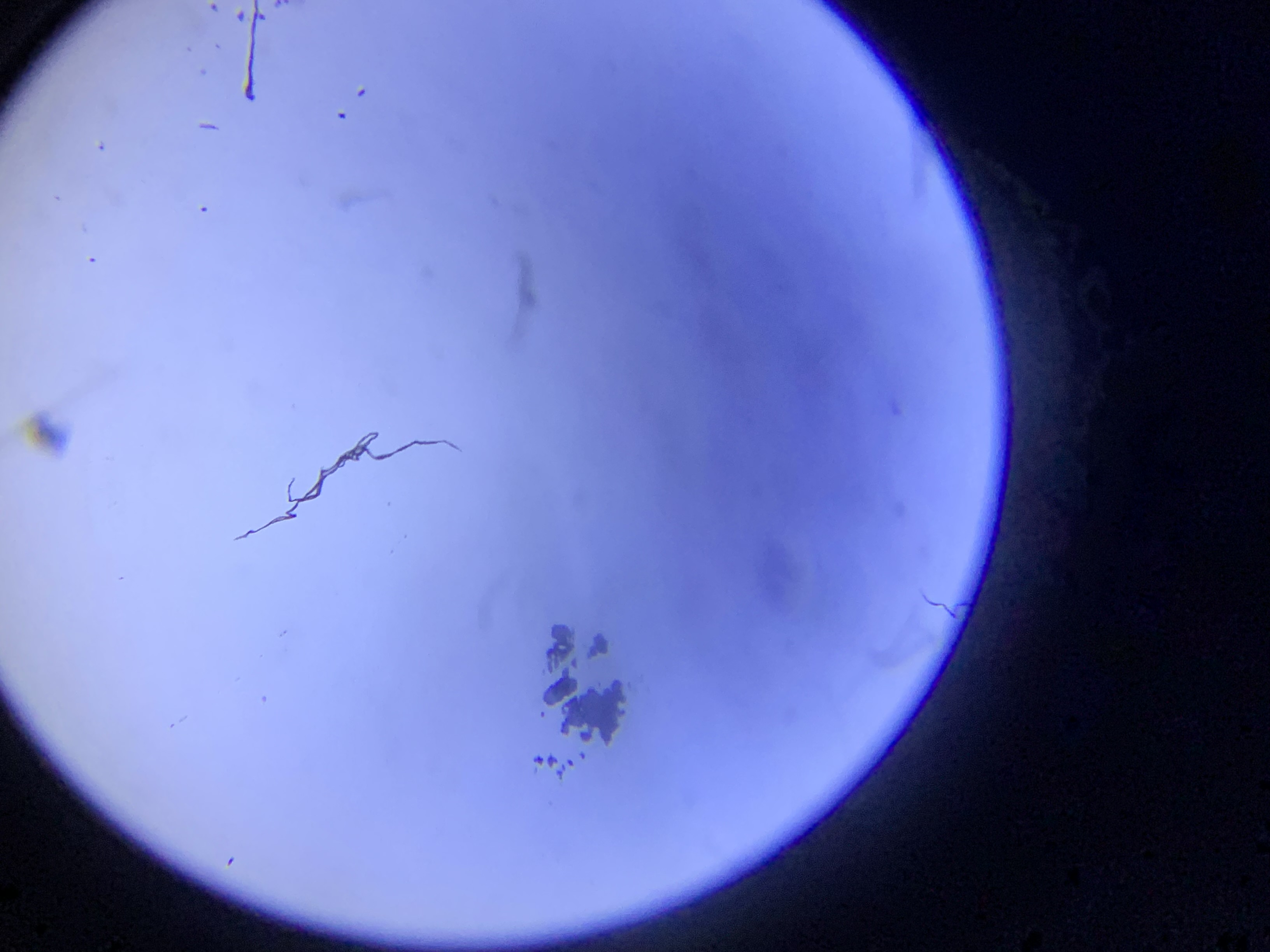
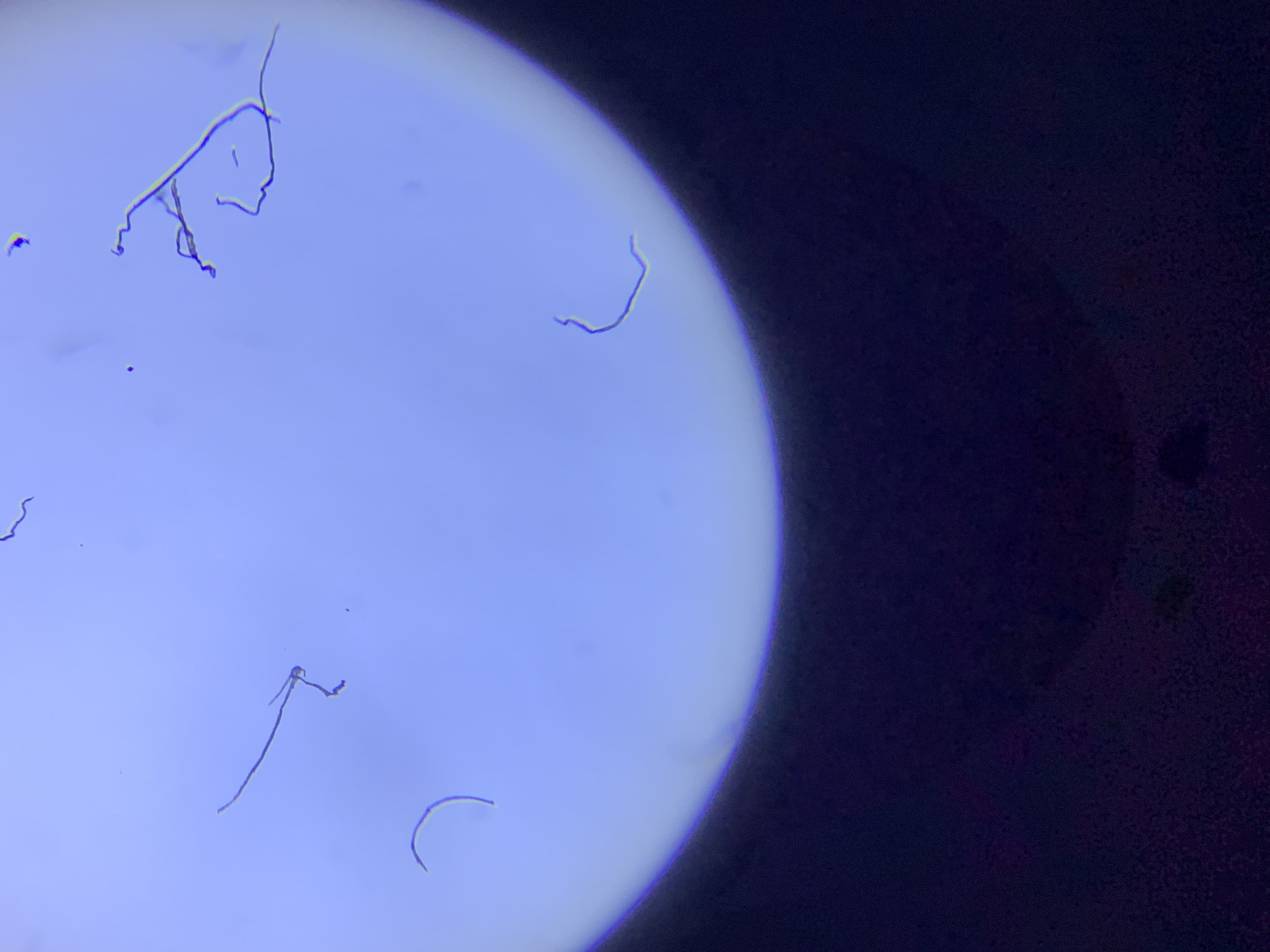
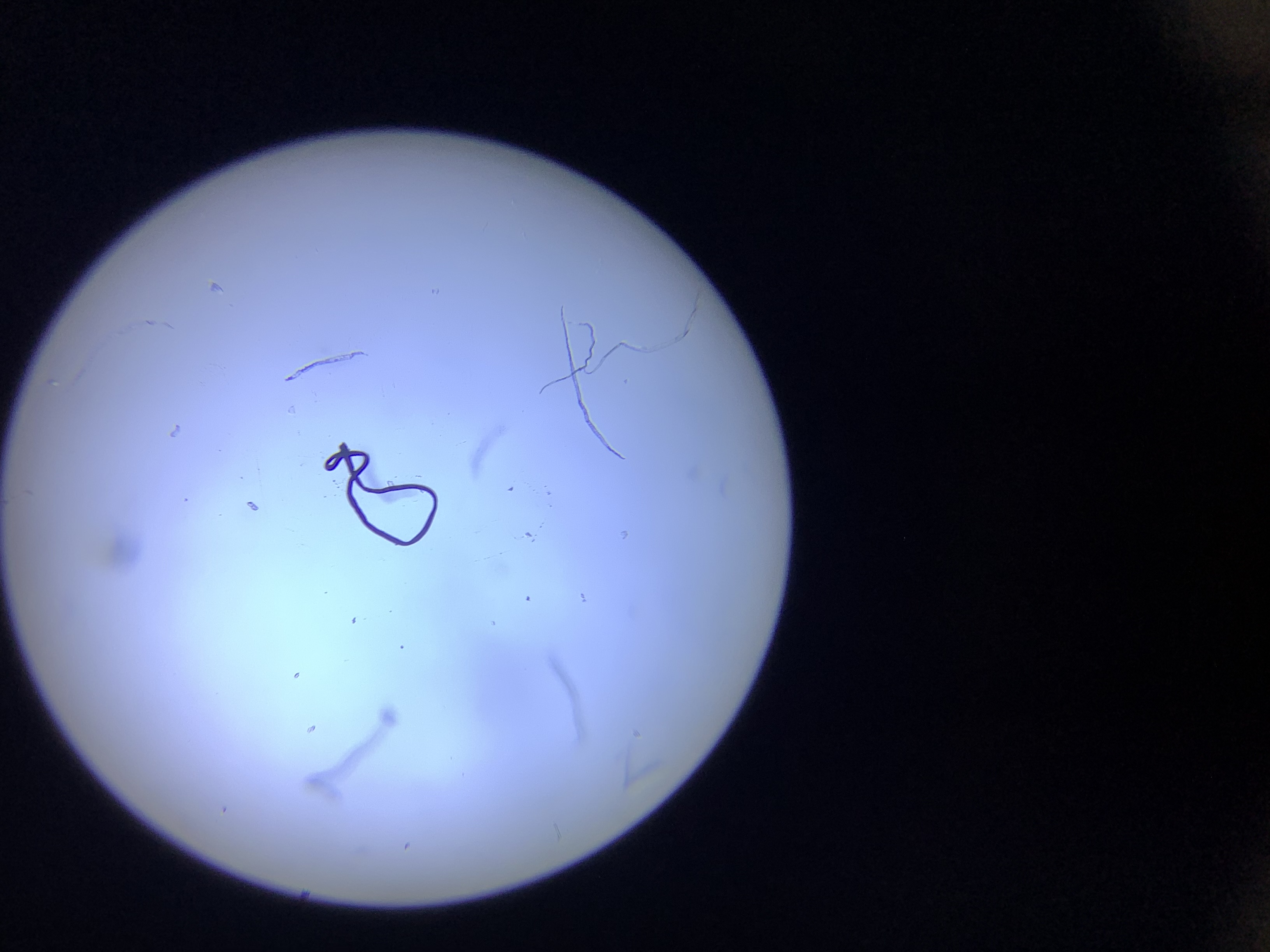
Confluence Park - Before Filtration:
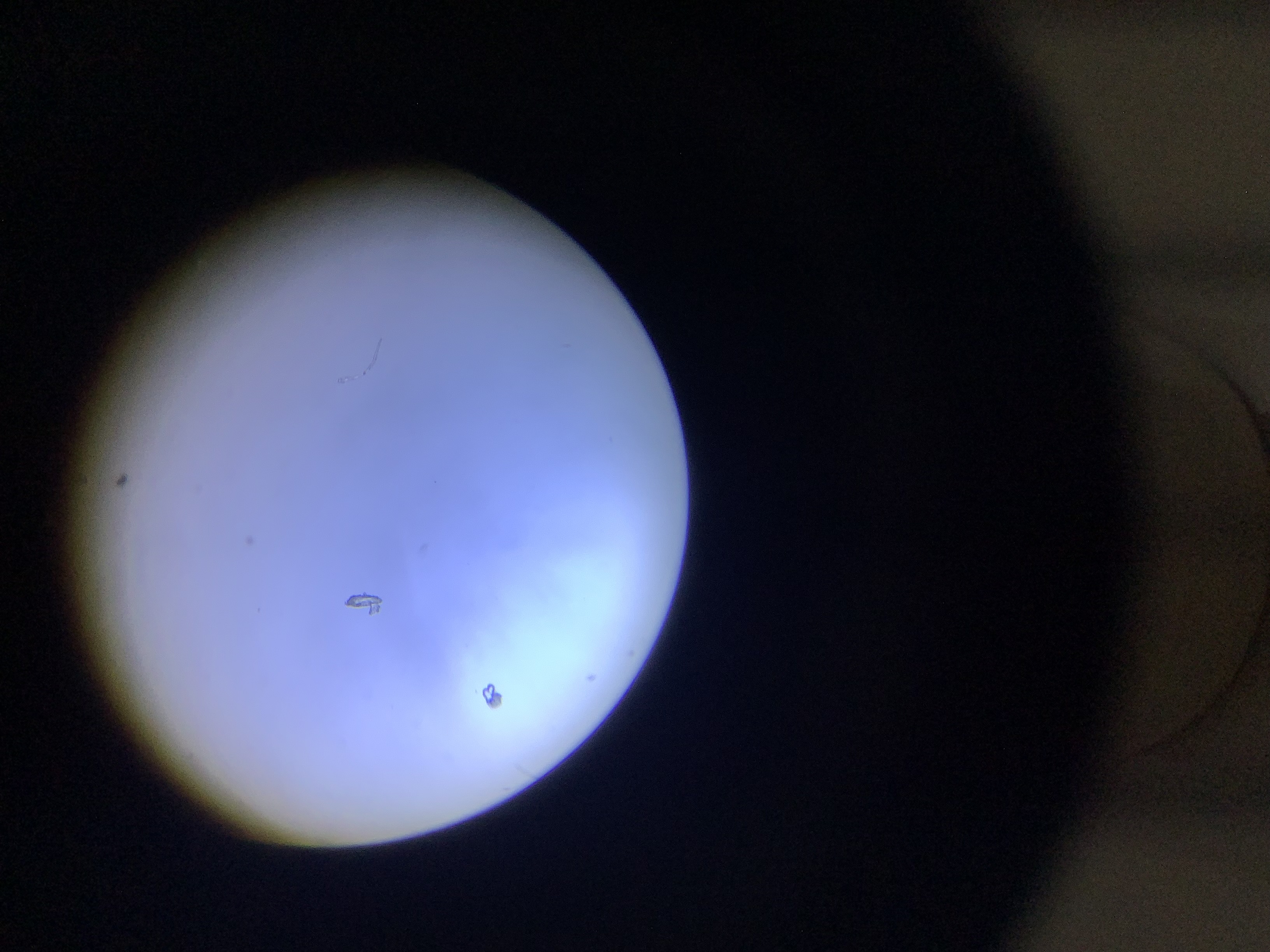
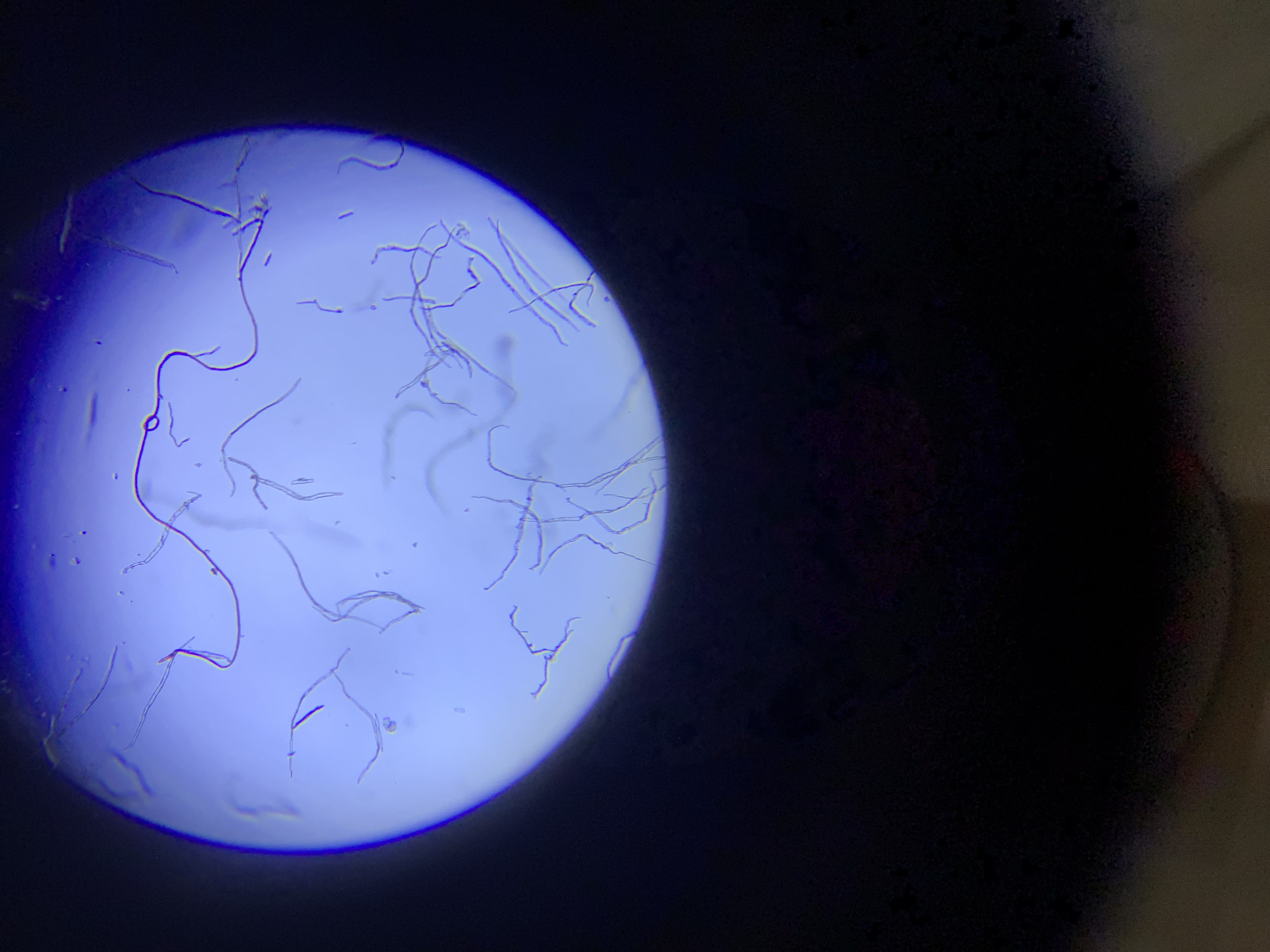
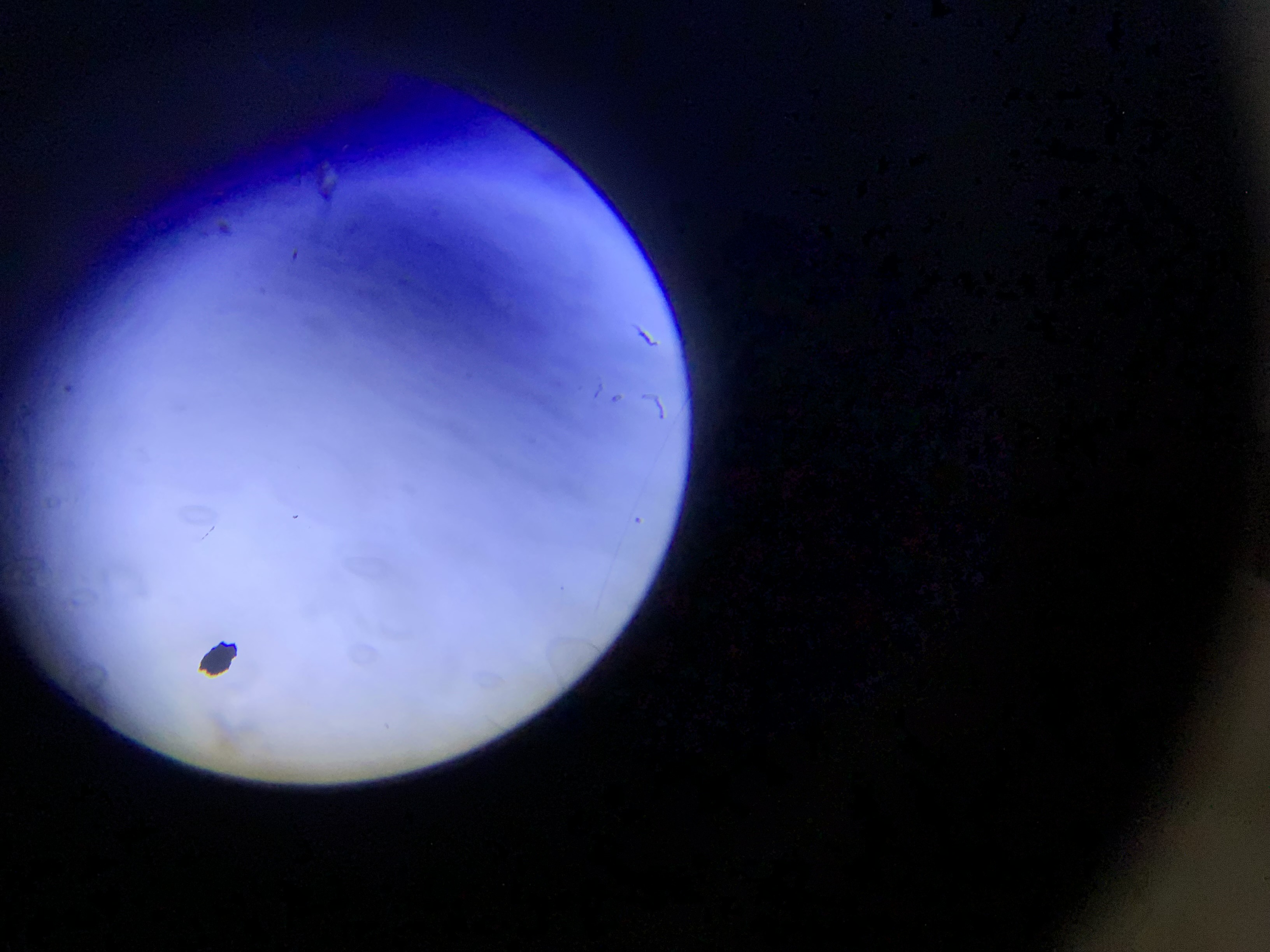
Distilled Water:
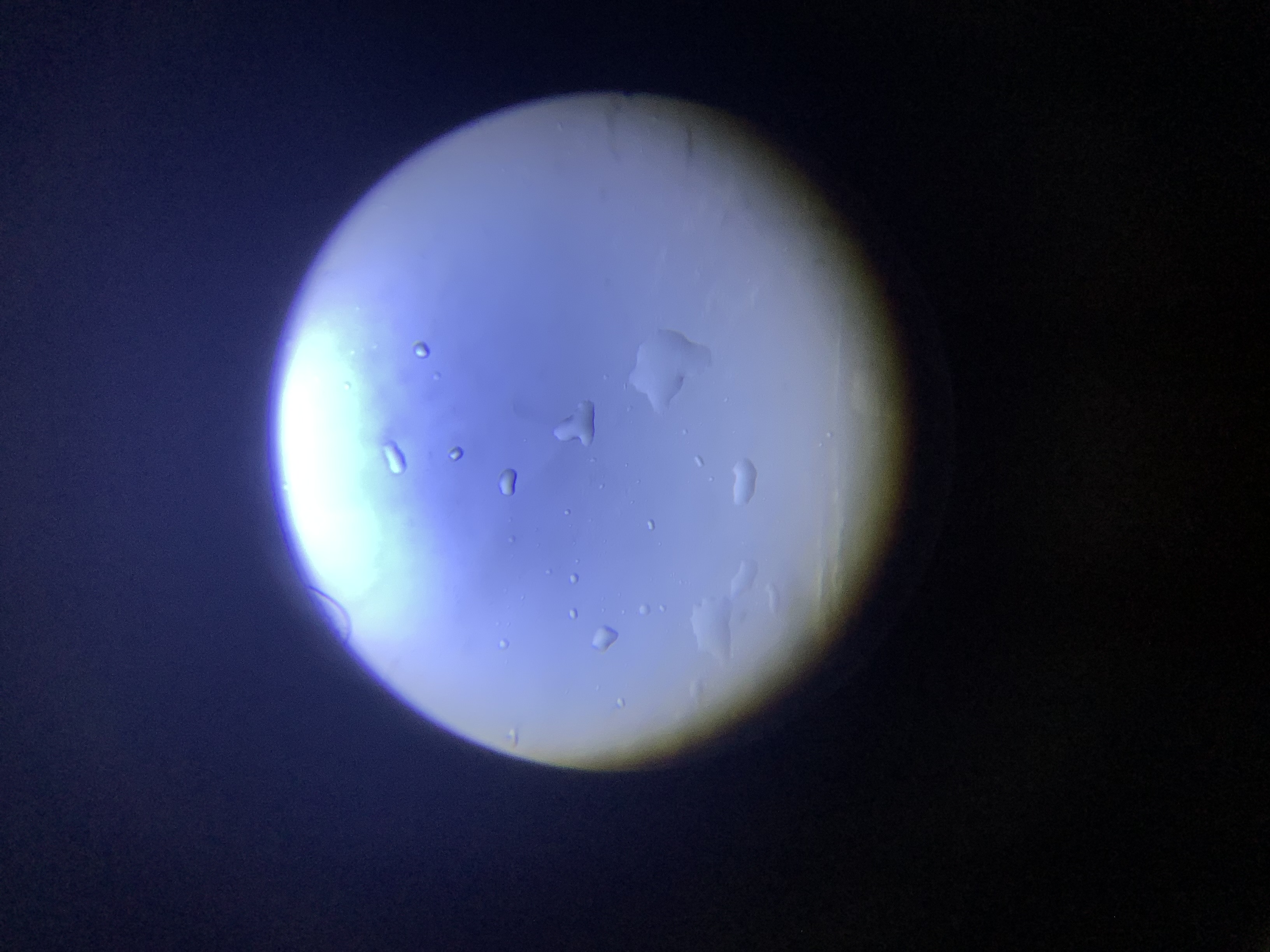
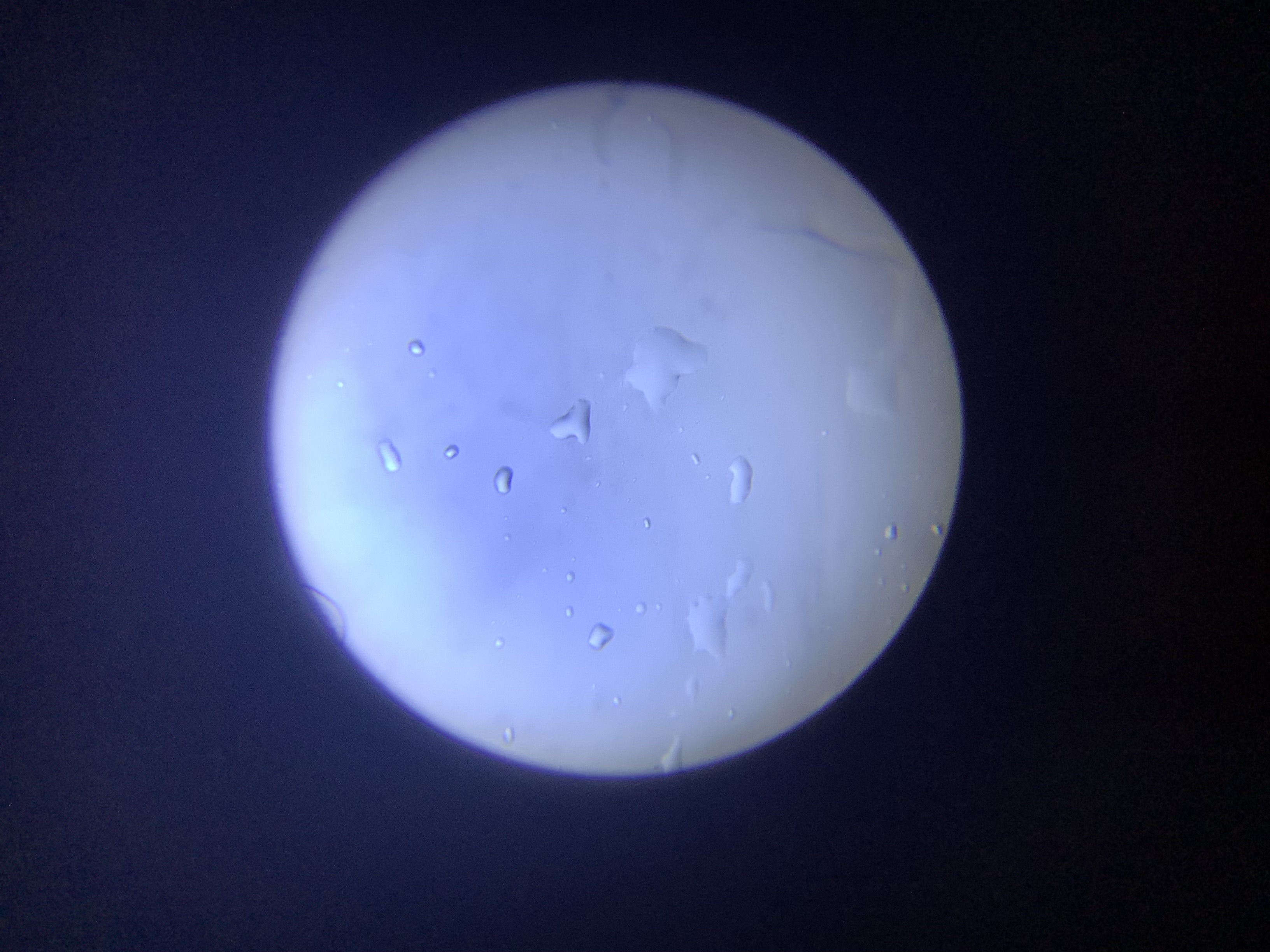
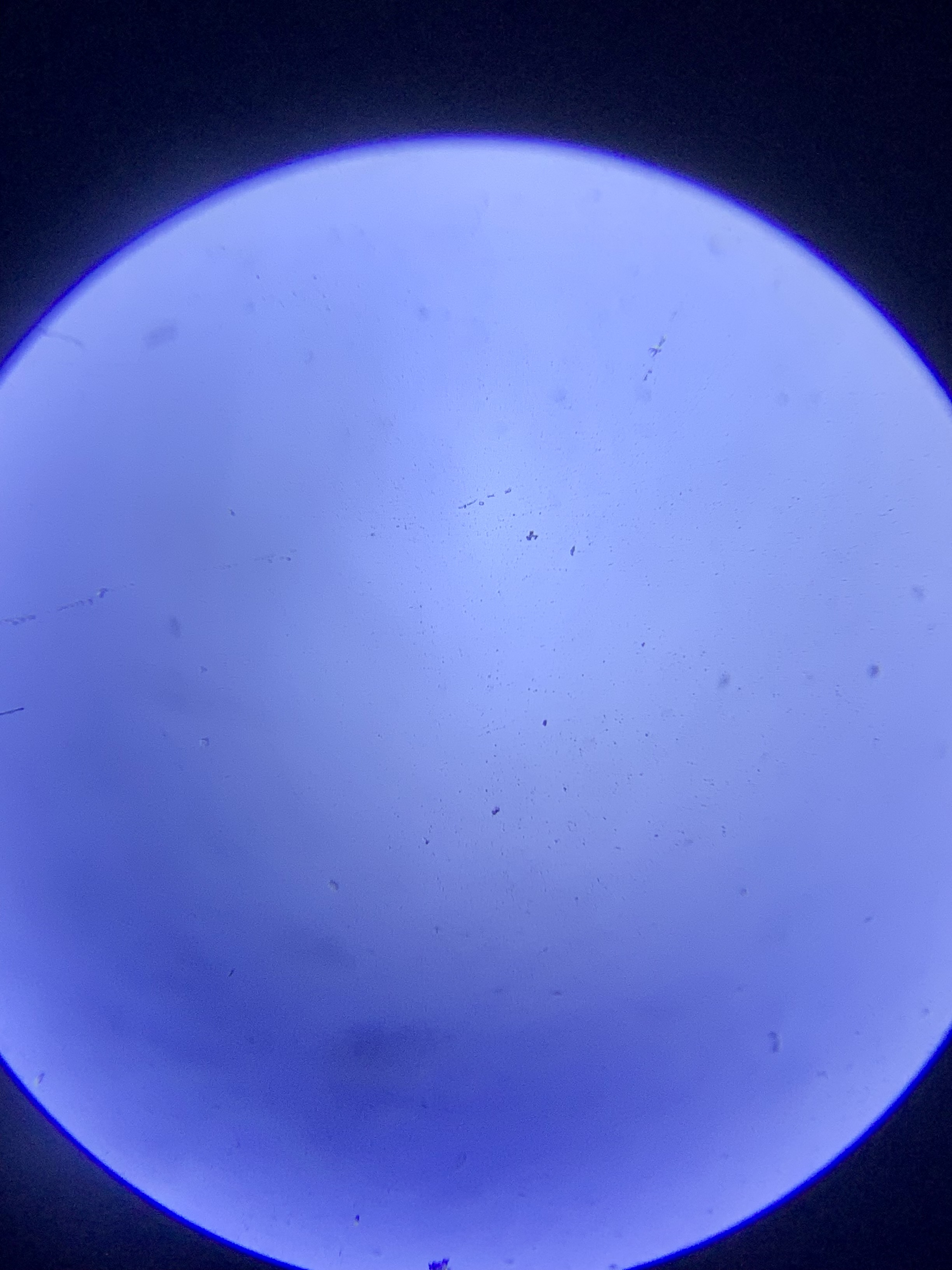
Carburn - Inglewood - Confluence - Filtered Paper:
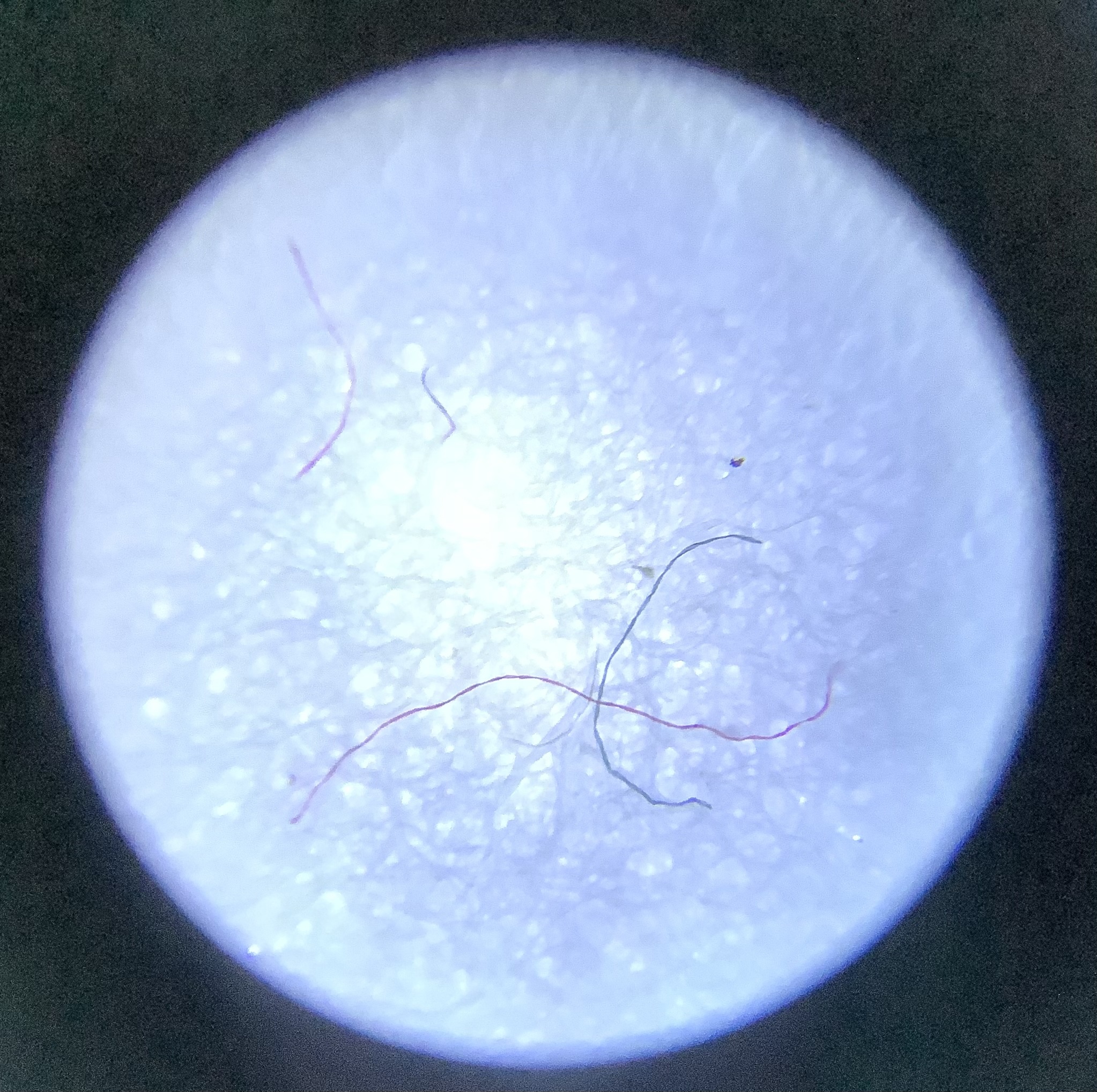
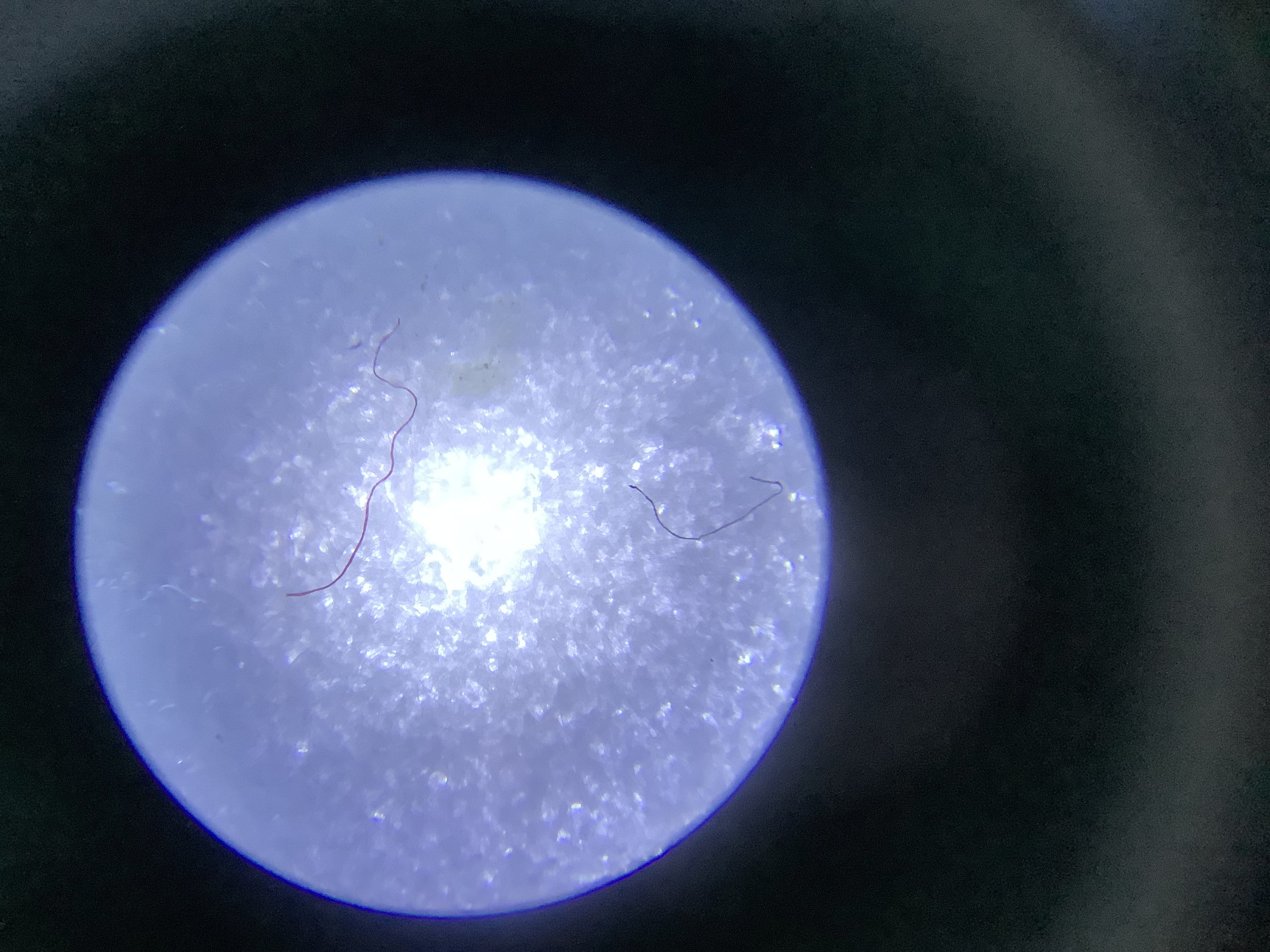
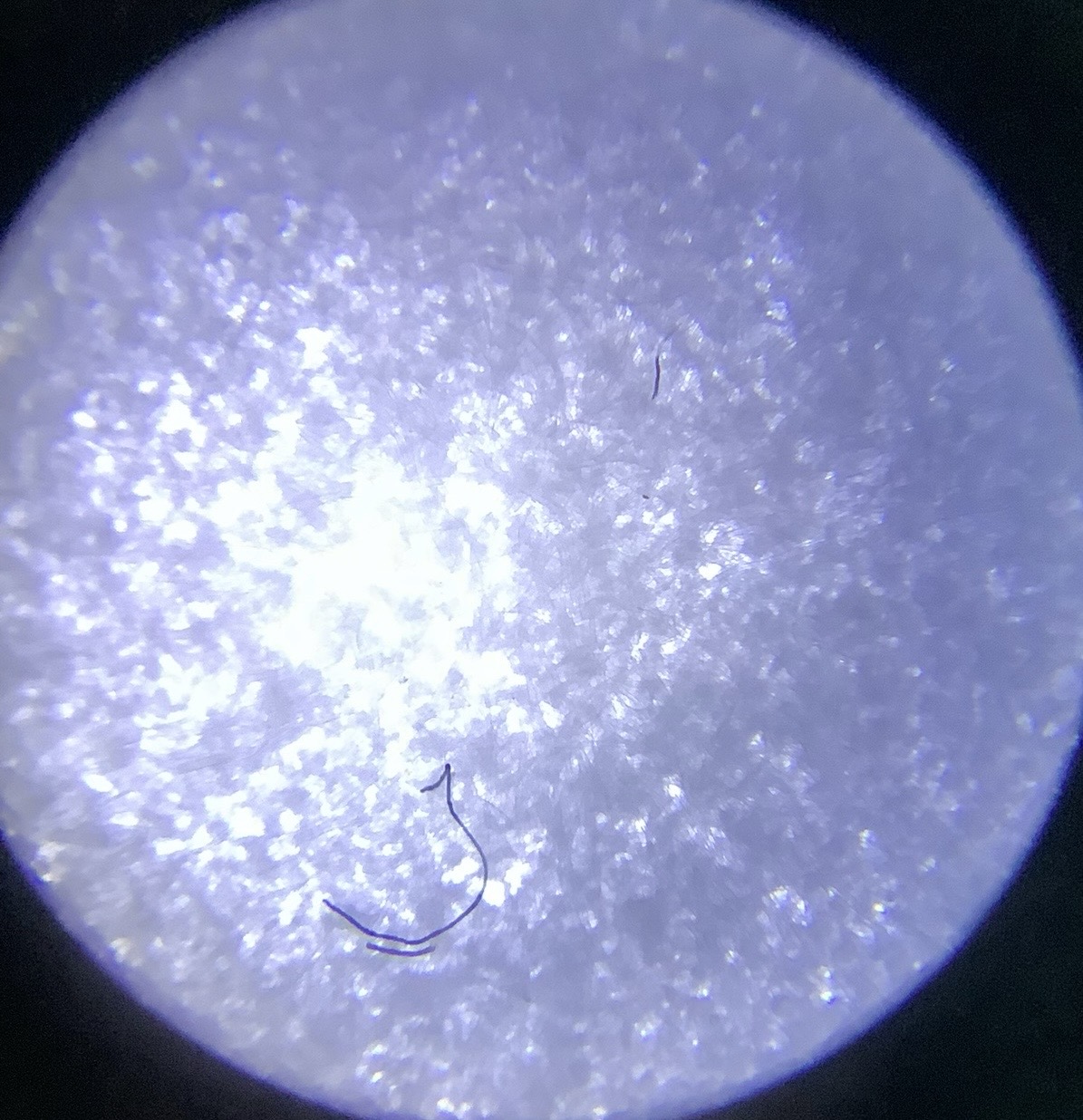
Carburn - Inglewood - Confluence - After Filtration Water:
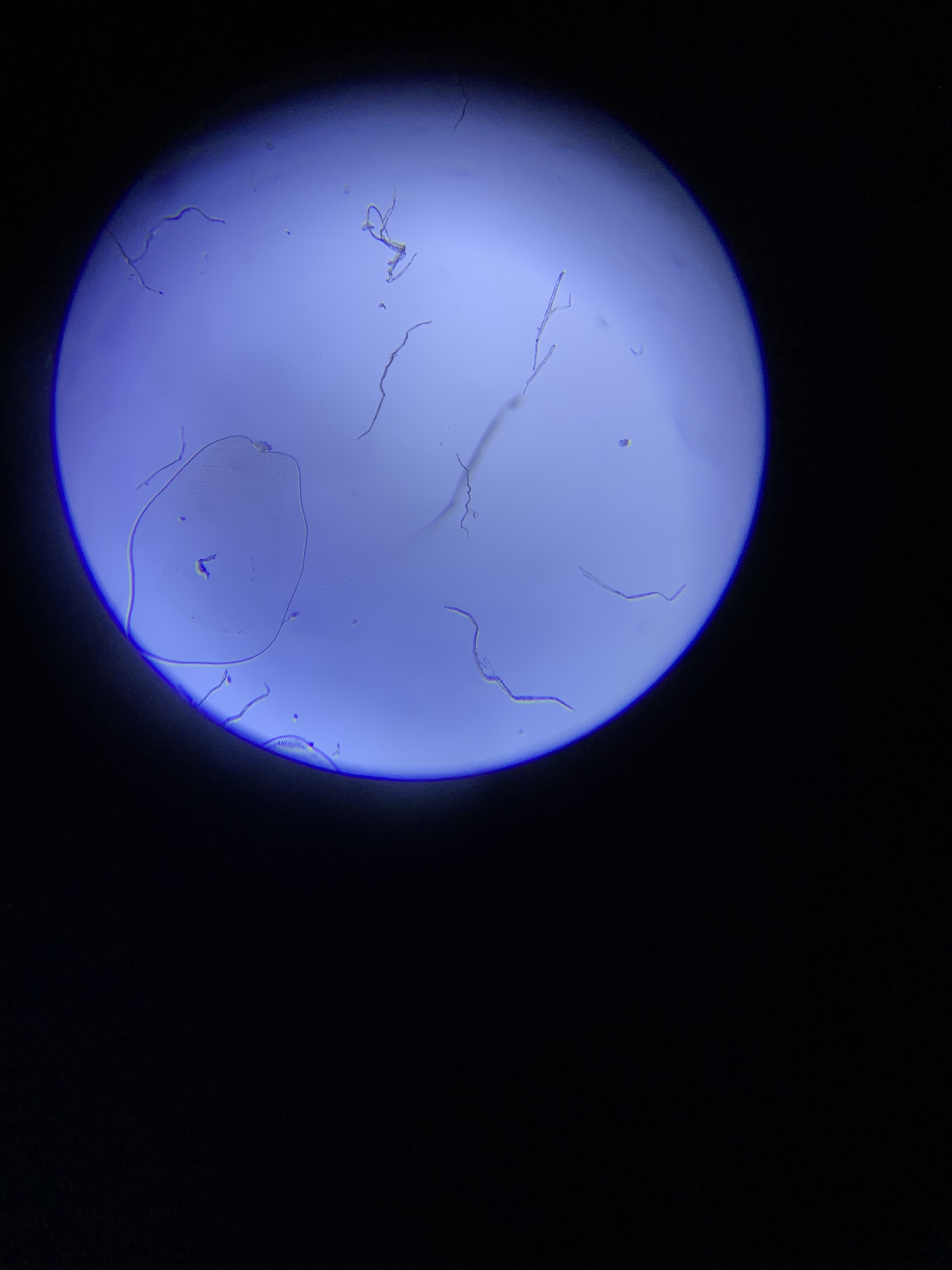
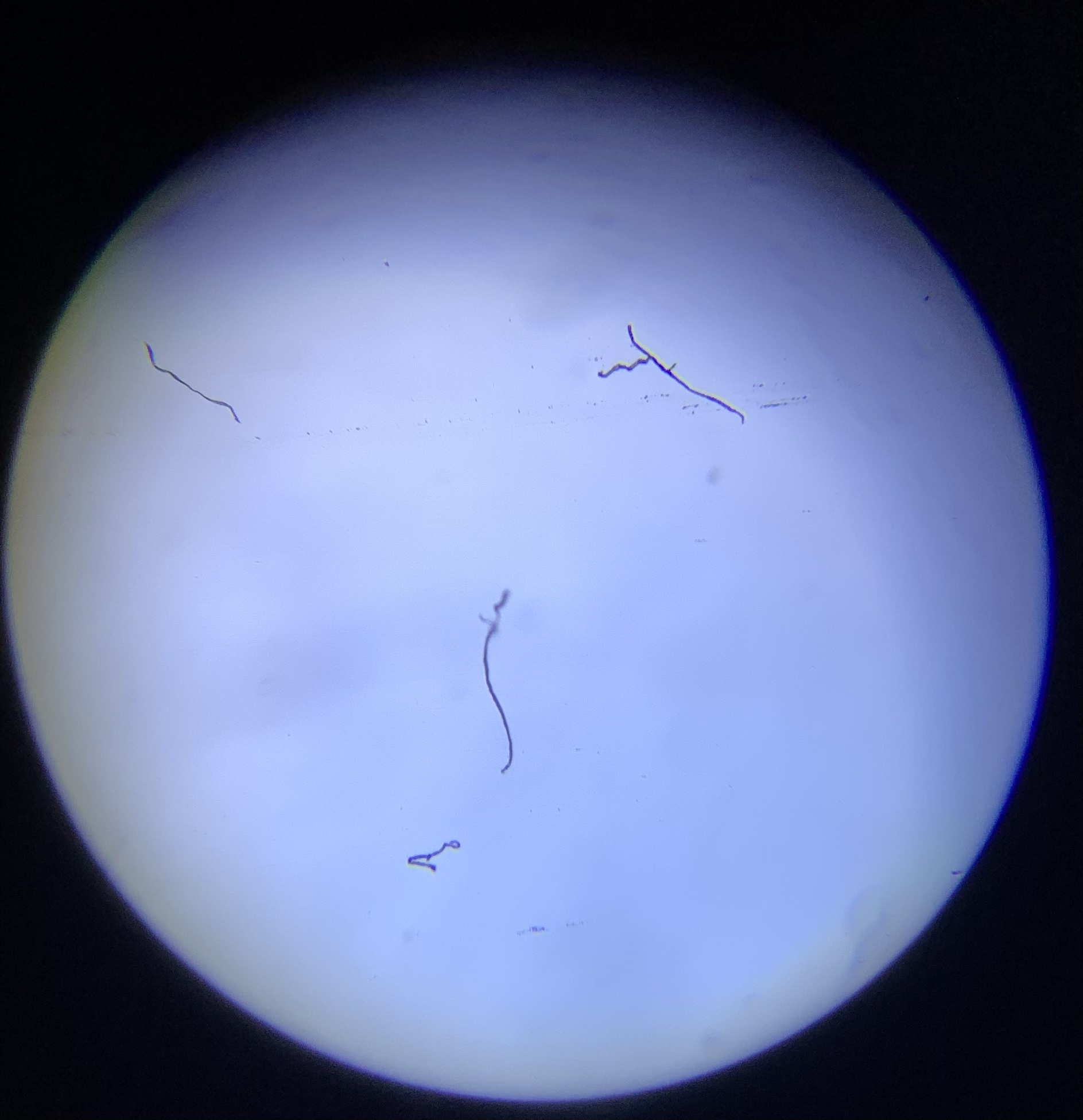
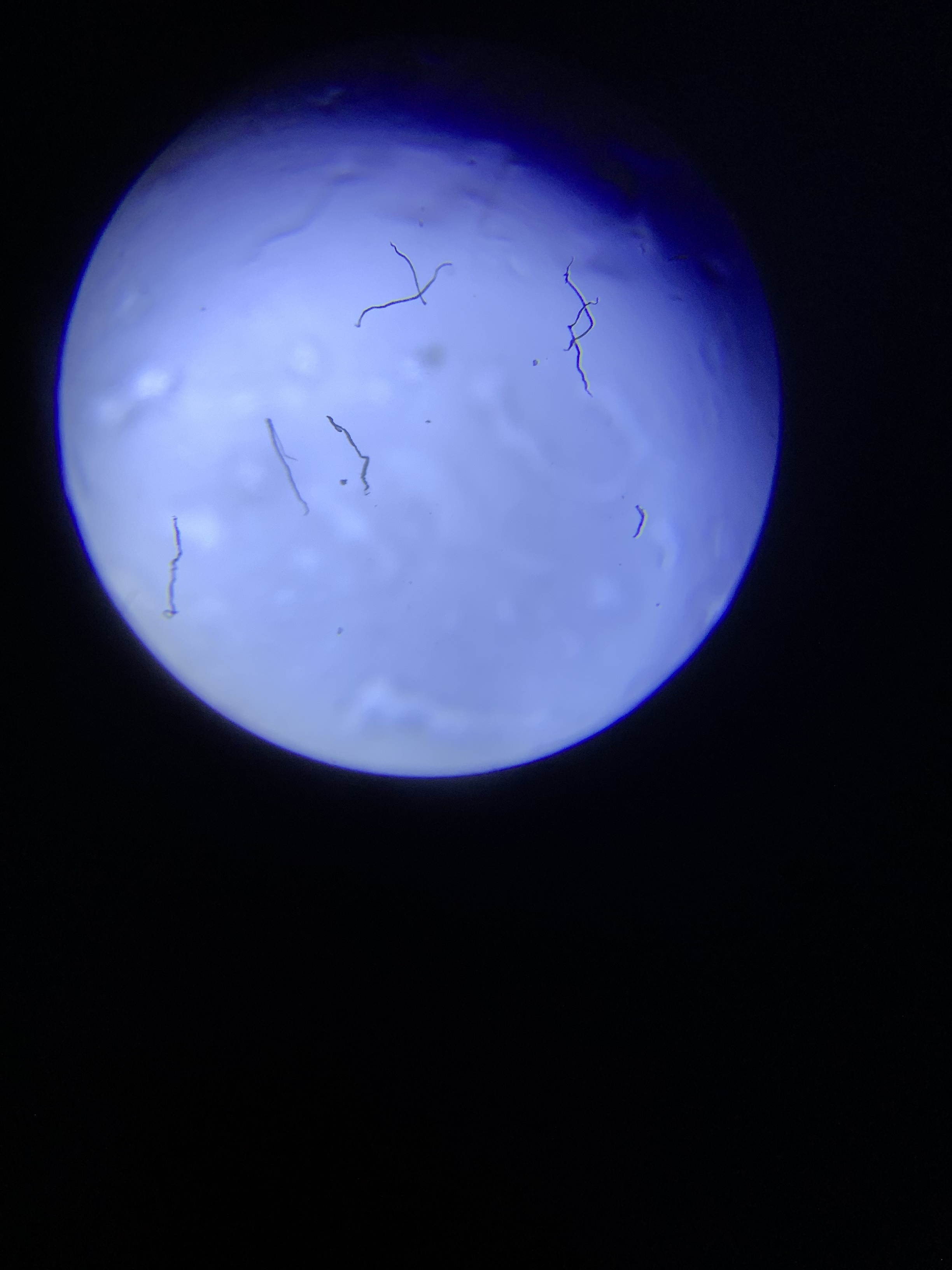
Analysis
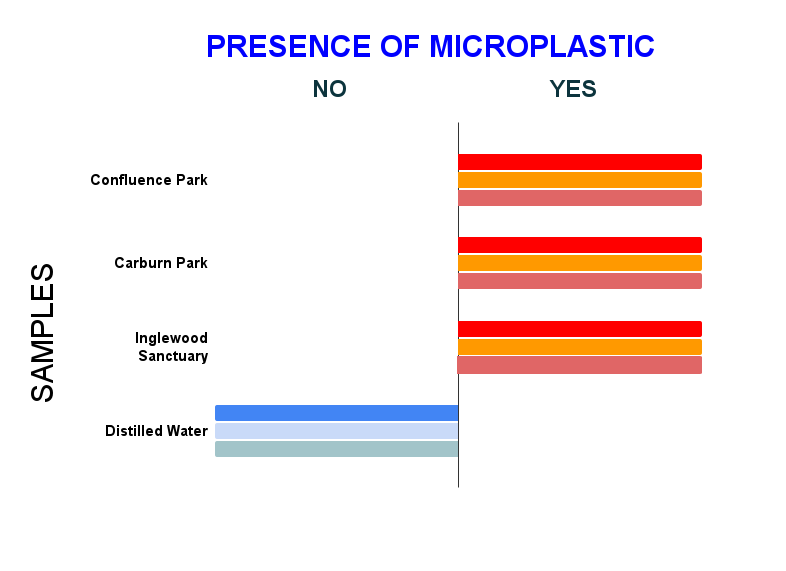
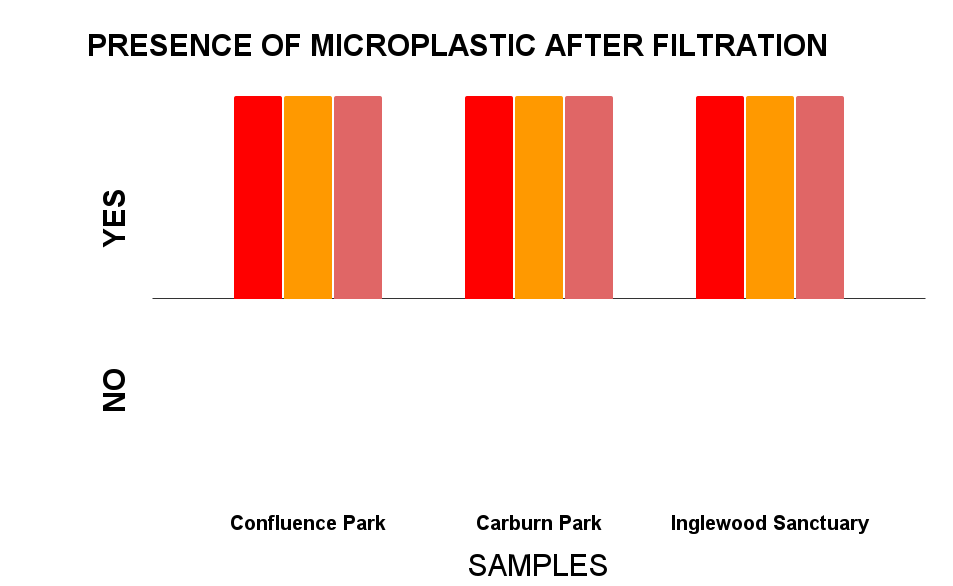
Conclusion
My scientific question for this experiment was, “Do the water bodies in Calgary contain microplastics, if so what is their approximate size? After researching this topic, I found that microplastics have many ways in which they enter water. The microplastics could enter through people littering and the litter then decomposing into microplastics. Using this information, I hypothesized that when the water bodies would be tested they would each have microplastic content in them. From the data I collected before the filtration and after filtration, I came to the conclusion that each water body had microplastic content. This means that my hypothesis was correct.
The observations I made using my samples are evidence that my hypothesis was correct. The tables where I organized my data showed that through my observations, I saw microplastic content. A trend I noticed throughout the trials was that some trials would not have many microplastics while some have microplastic content in large quantities. The Carburn Park trial #2 (before filtration) shows evidence of just how much microplastic is in the waters of Calgary.
The articles I read for my background research paper, have photos with microplastics and if I compare these to my photos, many things that are seen match. Mississippi State University’s experiment of microplastic has photos of microplastic on page 7 of their article. Figure seven shows a microfibre that matches with trial two of my Confluence Park sample (only difference is colour).
In conclusion, when I tested the water bodies of Calgary for microplastic by looking through a microscope and filtering, I saw many microplastics. This means that my hypothesis that each water body would have microplastic was correct. Which means that the answer to my scientific question, if the water bodies of Calgary contain microplastic, is yes and the microplastics appear in considerable concentrations.
Application
Real Life Applications
This project can be used in real life by people like the city of Calgary to see if actions should be taken to reduce the microplastics in the water or even make bylaws about this. The city of Calgary can also set up committees to raise awareness of the problem of microplastic.
Another way this project can be used in real life is by people who care about the marine life of the Calgary water bodies. They, also like the city of Calgary, can use this project to show others that there truly is an issue of microplastics in the waters of Calgary. People can even take this project a step further and see about water bodies all over Canada. In conclusion, my project is helpful to the city of Calgary and those who care about marine life.
Sources Of Error
In this experiment, some sources of error I discovered were that I collected the samples from the banks of the flowing water. There could be a possibility of an error as the content of microplastoc flowing in the centre of the river could be less.
Citations
BIBLIOGRAPHY
https://magazine.hms.harvard.edu/articles/microplastics-everywhere, January 8-14 2025, Stephanie Dutchen, Microplastics Everywhere
https://sustainability.yale.edu/explainers/yale-experts-explain-microplastics, January 8-14 2025, Yale Experts Explain Microplastics
https://education.nationalgeographic.org/resource/microplastics/, January 8-14 2025, Microplastics
https://uwaterloo.ca/news/media/scientists-can-now-remove-microplastics-our-water-94-cent, January 8-14 2025, Media Relations, Scientists can now remove microplastics from our water with 94 percent efficiency
https://www.bbc.com/future/article/20240110-microplastics-are-everywhere-is-it-possible-to-reduce-our-exposure, January 8-14 2025, Isabelle Gerretsen, Microplastics are everywhere: Is it possible to reduce our exposure?
https://www.cbc.ca/news/science/marketplace-canadian-bottled-water-microplastics-1.4606182, January 8-14 2025, Eric Szeto, Greg Sadler, David Common, Microplastics found in some Canadian bottled water
https://marinedebris.noaa.gov/what-marine-debris/microplastics, January 8-14 2025, NOAA Marine Debris Program, Microplastics
https://reporter.mcgill.ca/microplastics-and-the-environment/, January 8-14 2025, McGill Reporter Staff, Microplastics and the environment
https://www.watercanada.net/ucalgary-student-studies-microplastics-in-wastewater/, January 8-14 2025, Water Canada, UCalgary student studies microplastics in wastewater
https://news.stanford.edu/stories/2022/11/whales-eat-colossal-amounts-microplastics#:~:text=Humpback%20whales%20subsisting%20primarily%20on,million%20microplastic%20pieces%20per%20day, January 8-14 2025, Josie Garthwaite, Whales eat colossal amounts if microplastics
https://extension.msstate.edu/sites/default/files/publications/publications/P3243.pdf, January 8-14 2025, Mandy Sartain, MICROPLASTICS Sampling and Processing Guidebook
Eriksen, Marcus, (June 5th 2018), Junk Raft, Beacon Press
Simon, Matt, (October. 27 2022) , A Poison Like No Other,Washington DC: Island Press

